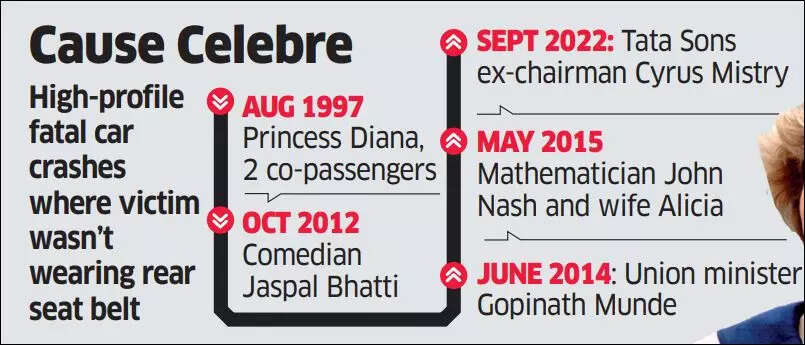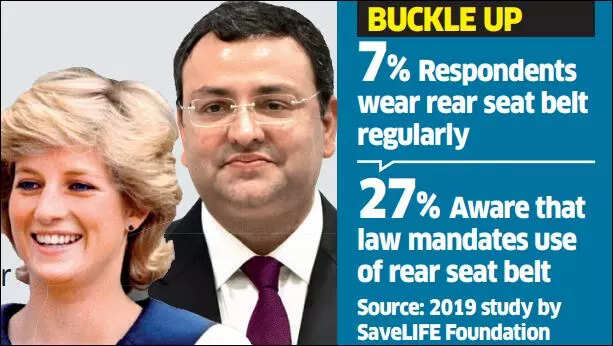Bengaluru: Freelance writer Sangita Nambiar recalls feeling a sense of shock when she first realised that former Tata Sons chairman Cyrus Mistry had passed away most probably because he was not wearing a seat belt while sitting in the back of a Mercedes-Benz, which rammed into a portion of a bridge.
“We have a Mercedes too and while I almost feel naked if I’m not wearing a seat belt when sitting in front, wearing one at the back always felt like a non-issue,” says the Bengaluru-based former copywriter. The 50-year-old has now resolved to make wearing seat belts a habit in any seat.
Nambiar was hardly the only one to express this sentiment. Mistry’s fatal accident sparked a host of discussions on the importance of wearing a seat belt in the rear seats of cars, with many taking to social media to announce their resolve to do so, like Mahindra Group Chairman Anand Mahindra. He tweeted that he would henceforth always wear a seat belt in the rear seat, adding “I urge all of you to take that pledge too. We all owe it to our families.”

A Change.org petition is being circulated seeking a national awareness campaign around wearing rear seat belts and a “heavy fine” to ensure compliance. But despite the best of intentions and the fervour behind these resolutions, behavioural psychologists and experts in consumer behaviour are more circumspect about whether this shift would last long enough to become a habit.

‘Fines Can Also Help’
Futurebrands CEO Santosh Desai feels that there is likely to be some change in the short term because all of us are aware that seat belts are available at the back and that it is a desirable practice. Mistry’s death is certainly a strong trigger for change and it has been reinforced by strong voices, like Mahindra’s, part of the initial stages of change. “But whether it will hold in the long term or peter out is the real question.”
The fact that the fatal accident happened while Mistry was sitting at the back of a car makes it more relatable than something like an astronaut getting killed while re-entering earth because the former is an experience individuals go through on a daily basis and it’s easy to put oneself in that position, as a result of which your risk perception and risk assessment changes, says Hansika Kapoor, a psychologist specialising in behavioural science at the research institute Monk Prayogshala. But while it may trigger change in the short term, “a one-off incident will not change a habit,” says Kapoor. For that, the risks might have to be reinforced in people’s minds continuously. In a 2019 study by non-profit SaveLIFE Foundation, only 7% of the respondents said they used rear seat belts even though it has been mandatory for years.
The high-profile accident might, however, reinforce the resolve of someone who has been through a similar experience by making the risk of not wearing a seat belt very salient, she adds.
The stickiness of behaviour change will depend on the stickiness of the memory of the incident, says Pavan Mamidi, director, Centre for Social and Behaviour Change, Ashoka University. In India, there have been other high-profile deaths of rear seat passengers who were not belted in, like former Union minister Gopinath Munde and comedian Jaspal Bhatti. “But one way to make such changes permanent is by building habits following these knee-jerk reactions,” says Mamidi.On Tuesday, Union minister for road transport and highways Nitin Gadkari said a seat belt alarm would be made mandatory for passengers in the rear seat too. “Public safety messages around the importance of wearing a seat belt in the rear and having fines for not wearing one can also help,” says Kapoor.